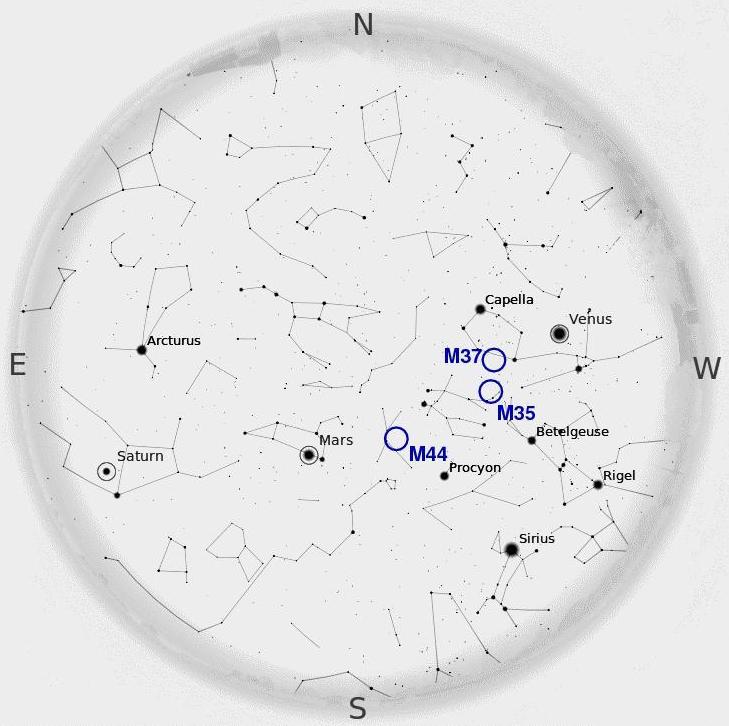Open House at RIT Observatory
Apr 13, 2012
Our main features tonight will be Venus early in the
evening, Saturn late in the evening,
and open star clusters in between.
| Venus is the bright object in the western
sky at sunset. It is currently near its greatest
brilliance, shining at magnitude -4.4, brighter than
any celestial object apart from the Sun and the Moon.
When you look at Venus tonight through a telescope,
you'll see a small crescent which looks very much
like the first quarter moon. The reason Venus looks
so much like the moon is because both are lit up
by sunlight, and in both cases, we on Earth can see
only a portion of the sunlight hemisphere.
Venus is right now catching up the Earth in its orbit.
On June 5, it will pass DIRECTLY between the Sun and Earth,
causing a transit that we can see from Rochester!
This will be your last chance to see a transit of Venus
until 2117.

|
.
|
Saturn, on the other hand, is currently
on the opposite side of the sky, far from the Sun.
Astronomers say that Saturn is "at opposition."
We'll have to wait a bit for Saturn to rise far enough
above the horizon in the East for us to see it.

How many of Saturn's moons can you see tonight?
Can you figure out the name of each moon you can see?
Our Milky Way Galaxy has hundreds of
open star clusters,
which are collections of young stars all born
from a single big cloud of gas.
Tonight, you'll have a chance to see
and compare three particularly nearby clusters.
They are all shown on the chart below:
M44 (the Beehive Cluster), M35 and M37.
Some might look best through binoculars, others
through our telescopes. Which is your favorite?

Some other events of interest tonight:
Thanks for coming to the RIT Observatory!
Please check our web page for future events.
http://www.rit.edu/cos/observatory/
Another good place to check is the Astronomy Section
of the Rochester Academy of Sciences:
http://rochesterastronomy.com


